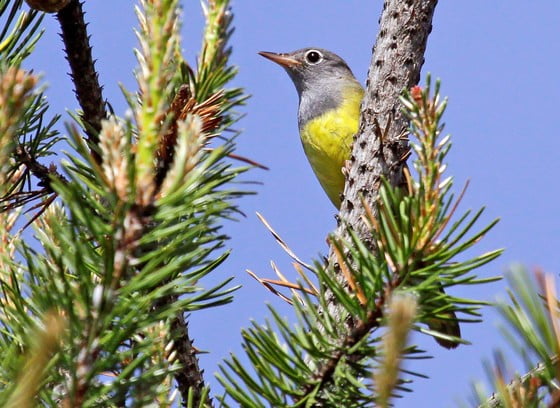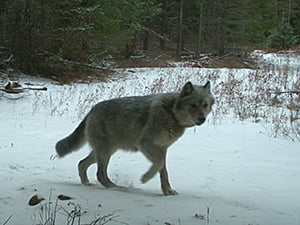
After two days of competition, Richard Clifton of Milford, Delaware, emerged as the winner of the 2020 Federal Duck Stamp Art Contest with his painting of a single lesser scaup drake. The announcement was made via live stream at the U.S. Fish and Wildlife Service Headquarters in Falls Church, Virginia.
Clifton’s acrylic painting will be made into the 2021-2022 Federal Migratory Bird Hunting and Conservation Stamp, or “Duck Stamp”, which will go on sale in late June 2021. The Service produces the Federal Duck Stamp, which sells for $25 and raises approximately $40 million in sales each year. These funds support critical conservation to protect wetland habitats in the National Wildlife Refuge System for the benefit of wildlife and the enjoyment of people.
This year, the Migratory Bird Conservation Commission, chaired by U.S. Secretary of the Interior David L. Bernhardt, approved the allocation of more than $48 million from the fund, made up partly of Duck Stamp dollars, to support the acquisition of lands from willing sellers for the Refuge System. The new areas provide additional access to the public to some of the most spectacular places available for hunting, fishing, birdwatching, hiking and other outdoor activities.
“Hunters and anglers are the backbone of American conservation, and the Duck Stamp is one of the many ways they contribute to conserving America’s waterfowl and wetlands throughout the country,” said Secretary Bernhardt. “I encourage everyone, including those who do not hunt, to buy a Duck Stamp as it makes a real impact in conserving wildlife species and wetlands habitat.”
Since it was first established in 1934, sales of the Duck Stamp to hunters, bird watchers, outdoor enthusiasts and collectors have raised more than $1 billion to conserve over six million acres of habitat for birds and other wildlife and provide countless opportunities for hunting and other wildlife-oriented recreation on our public lands.
“For more than 80 years, millions of waterfowl hunters have made a difference in protecting our nation’s birds and their habitats,” said Aurelia Skipwith, Director of the U.S. Fish and Wildlife Service. “The Trump Administration has prioritized protecting our wildlife and their habitats and provided access to some of the most spectacular places available for hunting, fishing, birdwatching, hiking and other outdoor activities.”
Waterfowl hunters age 16 and older are required to purchase and carry the current Federal Duck Stamp. Many non-hunters, including birdwatchers, conservationists, stamp collectors and others also purchase the stamp in support of habitat conservation. Additionally, a current Federal Duck Stamp can be used for free admission to any national wildlife refuge that charges an entry fee.
This is Clifton’s second Federal Duck Stamp Contest win. His art previously appeared on the 2007-2008 Federal Duck Stamp.
In addition to Clifton, James Hautman of Chaska, Minnesota, placed second with his acrylic painting of a flock of lesser scaup, and Joseph Hautman of Plymouth, Minnesota, took third place with his acrylic painting of a flock of lesser scaup.
This 2020 contest now has a permanent theme of “celebrating our waterfowl hunting heritage” and it will be mandatory that each entry include an appropriate waterfowl hunting scene and/or accessory. Of 138 entries submitted to this year’s competition, seven entries made it to the final round of judging. Eligible species for this year’s Federal Duck Stamp Contest were the gadwall, brant, cinnamon teal, lesser scaup and red-breasted merganser. View the online gallery of the 2020 Federal Duck Stamp Art Contest entries.
The judges for this year’s Federal Duck Stamp Contest were: Donnie Satchell, conservation partner and artist; Jane Lawson, conservation partner and artist; Eric Morris, conservation partner; Scott Penegar, artist; and Paul Wait, conservation partner.
“The Duck Stamp is one of the most successful conservation programs ever created. I am so proud to be a part of this annual tradition that combines the best of talented artwork from around the country with habitat conservation,” said Jerome Ford, Assistant Director for the Service’s Migratory Bird Program. “As the only federally regulated and sponsored art contest, competing artists offer their time and talent to capture the beauty of waterfowl and the tradition of waterfowl hunting.”
You can contribute to conservation and America’s great outdoors tradition by buying Federal Duck Stamps at many national wildlife refuges, sporting goods stores and other retailers, through the U.S. Postal Service, or online at http://www.fws.gov/birds/get-involved/duck-stamp/buy-duck-stamp.php.

